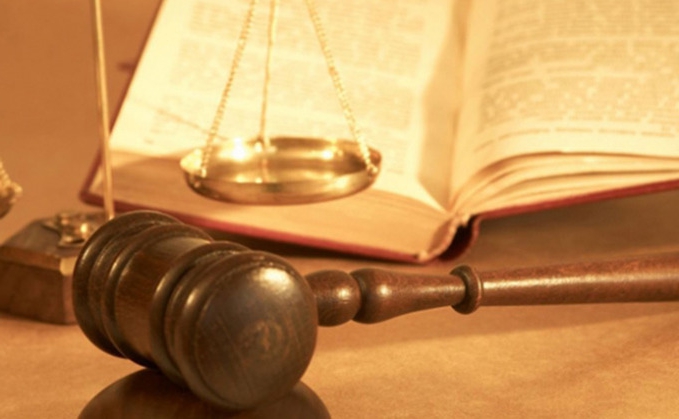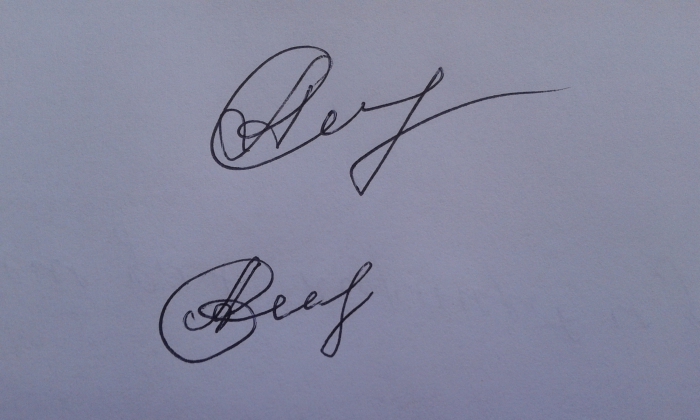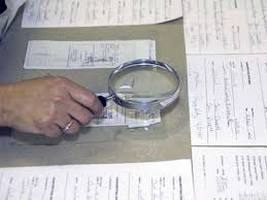The signature is a special sign of a person, his property, which belongs only to him, and no one has the right to take it from a citizen. In some cases, a signature is an identification of the person along with a passport.
Any unauthorized falsification is prosecuted, and signature falsification is no exception. As a rule, signs of falsification of a signature are determined mainly on documents.
Signature fakes are made in different ways and for various purposes. The main motive of the one who performs these actions is to give legal force to a document on which is signed, as a rule, by an official or authorized person.
Types of documents
It is necessary to distinguish between fake documents and false. This is important during the preliminary or judicial investigation, and especially if you need to appoint an examination.
Fake documents are those that contain changes that do not correspond to the genuine parts of the document that should be contained in the document or are supposed to be.
False documents are those that directly contain information that does not correspond to reality.
Proof of
Documents that can be both written evidence and material are important in criminal procedural activity. It is material evidence that can be the document on which a fake signature is found.
With the slightest doubt that the document is endorsed by those who need it, that is, that the signature was faked, the examination is carried out by specialists who have all the necessary tools for this and knowledge.
There is no article in the Criminal Code only for falsifying a signature, but there is a provision on falsification of documents, seals, stamps and letterheads. Moreover, the illegal affixing of an “autograph” on a document for someone is part of the crime.
Norms of law
More than one article of the Criminal Code relates to this act. Signature falsification is often seen as the final stage of breaking the law in the articles of the Criminal Code:
- 142 (falsification of election documents).
- 292 (official forgery).
- 292.1 (illegal issuance of a passport, i.e. acquisition of citizenship RF).
- 322.2 (fictitious registration of a foreign citizen).
- 324 (purchase or sale of official documents).
- 325 (theft or damage to official documents).
- 327 (forgery or manufacture, as well as marketing of documents) and other similar provisions.

Manual fake
Methods of technical falsification of a signature are any variants of falsification, except forgery "from memory". This type is carried out by painting on various documents simply by hand, as usually a person signs. Forgery of a signature “from memory” is the easiest for examination, since it is not difficult for a specialist to distinguish even the original from a fake for individual strokes, curls, etc., without special tools.
In addition, there are cases when a document is signed by the person who has never before seen the original signature. For the performer, this act is complicated by those moments that he does not know the characteristic features of the original. In this case, for this crime (signature falsification) the examination may not be appointed, since the crime is obvious.
Technical methods of fake
Techniques for counterfeiting when any additional means are used, including computer tools, are called technical.
Among them, forensics distinguish the following:
- Redraw with a pencil followed by a stroke.
- Copying - through glass, by pressing or through a copy sheet of paper.
- Transferring the coloring matter from the original to a fake document using substances that have copying properties (egg white, emulsion layer of photo paper).
- The use of computer technology - scanner and laser.
In addition to the above, they also call facsimile signature (signature in the form of a stamp), but not in all cases, its use will be considered a crime. The use of this seal by proxy is completely legal, it is affixed to a certain type of documents.
Signs of a fake. Expertise
Signature falsification methods determine the type of examination that will be carried out. First of all, if there is confidence that this is a technical fake, it is necessary to establish the following symptoms:
- The presence of double strokes, the angularity of rounded lines, traces of preparation - when drawing.
- Thickening of strokes down, particles of the coloring matter on the back of the document, multidirectional movements - when copying through glass.
- Traces of coloring matter from carbon paper in the place where the signature is located, insufficiently complete combination of the strokes of the signature itself and the strokes of the carbon paper - when copying through special paper.
- The lack of relief, uneven coloring, the presence of particles of the emulsion layer of photo paper - when using materials that have increased copying ability.
Attraction Features
In order to attract a person under the law for a fake, a document is needed on which the fake signature is made, examination and expert opinion. As stated earlier, the document is material evidence.
When deciding whether to initiate a criminal case, for example, when an accountant signs a certificate for the head in form 2-NDFL, some questions arise regarding the application of article (usually) 327 of the Criminal Code.
In the event that the accountant did not have intentions or personal interest, and also if no changes were made to the document that would distort the meaning of the content, then criminal liability for falsifying the signature does not occur. Otherwise, if the changes were made and distorted the meaning of what was written, then article 292 of the Criminal Code of the Russian Federation may be applied - official forgery.
In the criminal process, when a fake signature is found, the examination is crucial, as this will be practically the only evidence that the crime took place.
Special factors and documents
However, it is necessary to consider many factors that could influence the situation:
- Is the person an official.
- Whether there was criminal intent or personal interest in his actions.
- What functions did the document on which the signature was forged. This is necessary to determine the presence of corpus delicti. For example, if a document provides some right to its future owner or is relieved of duties, then punishment for falsifying a signature (document) under article 327 of the Criminal Code.
- When deciding on the issue of criminal prosecution, it does not matter if a document with a fake signature was used or was just made.
Documents that most definitely grant rights or relieve from duties include the following:
- Any documents on education, including certificates, certificates and certificates.
- Pension and driver's licenses.
- Testaments, powers of attorney.
- Patents, licenses, etc.
Signature falsification is not a crime
It should be borne in mind that an official document that has legal force, but does not provide rights and does not relieve from duties, is not a crime.
It is also necessary to take into account that there is article 14 of the Criminal Code, paragraph 2, which states that such an act (inaction) is not a crime, which, although it contains signs of an act, but because of its insignificance does not pose any danger to society .
Signature for the boss
In human life, there are times when it is not possible to get the signature of the right person. This may be a minor document in the workplace, which is needed here and now. The one who signs “for the boss” undoubtedly risks that a fake signature will be revealed, but there is no other way.
As a rule, these actions are performed by an employee who has seen the chief’s signature many times, and before signing it, he tries it many times on a separate piece of paper.
If you look closely at the "fake", you can see not the signs of technical falsification of the signature, but the signs of fake "manually."
Today it has become so widespread that no one is paying attention to it. Although it is worth thinking about it. It is possible, in order to avoid unpleasant situations, to obtain verbal, or better written permission from the authorities to affix their signatures or to produce high-quality facsimiles.
Signature for relative
Signing in everyday situations for someone, mainly a relative, may also not be a crime if forgery of the signature did not entail any serious legal consequences.

For example, very often and, of course, illegally mail workers allow relatives to receive a registered letter from the addressee. Such letters may come from the tax authorities, the pension fund, from bailiffs or from the registry of the court.
If the usual information about accruals or the requirement to pay tax comes from the tax and pension, then letters from the judicial authorities and those related to this field usually come with a notification of receipt. That is why it is necessary that such letters be received by those to whom they are addressed.












Does the act fall under the article? thank